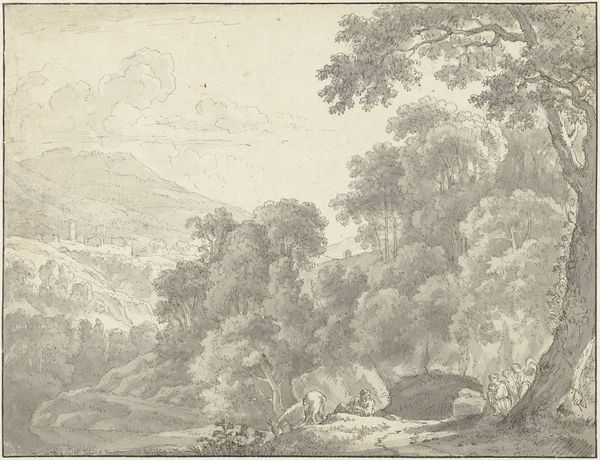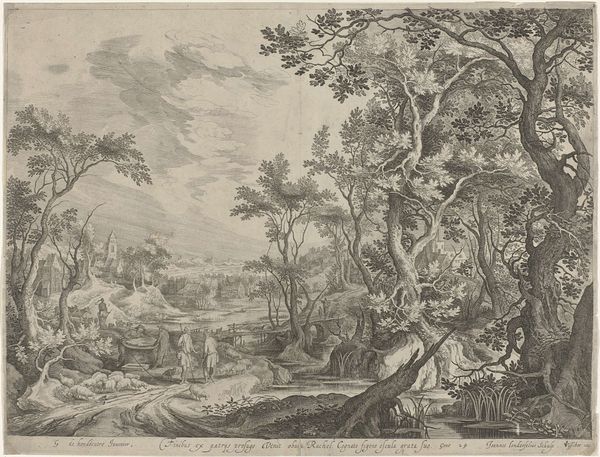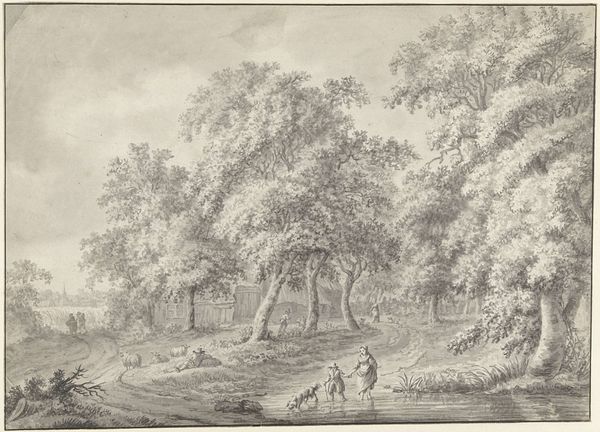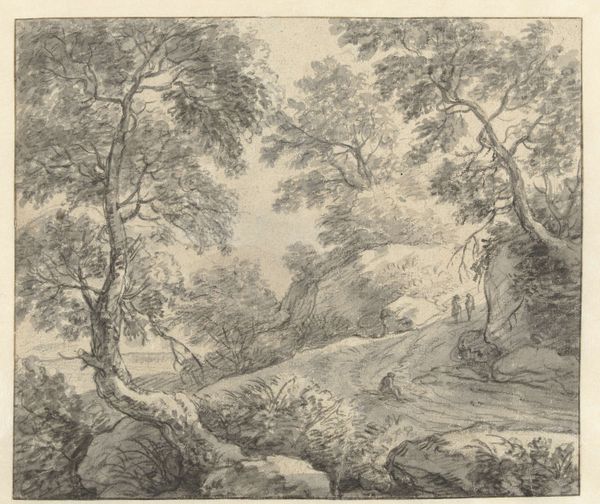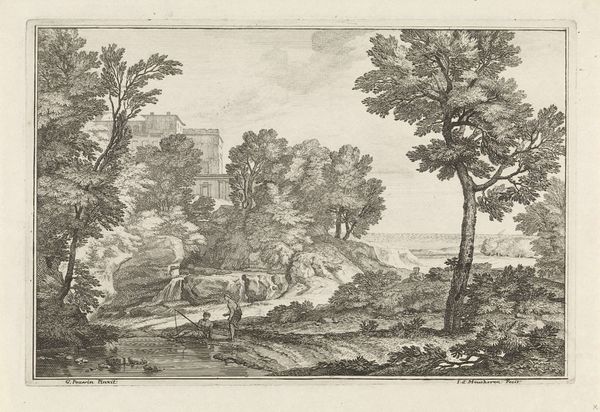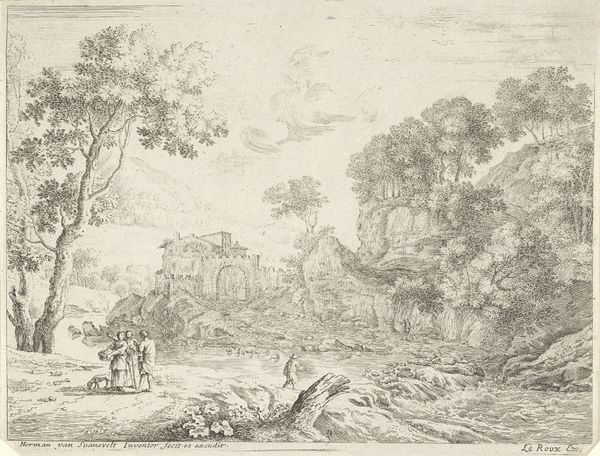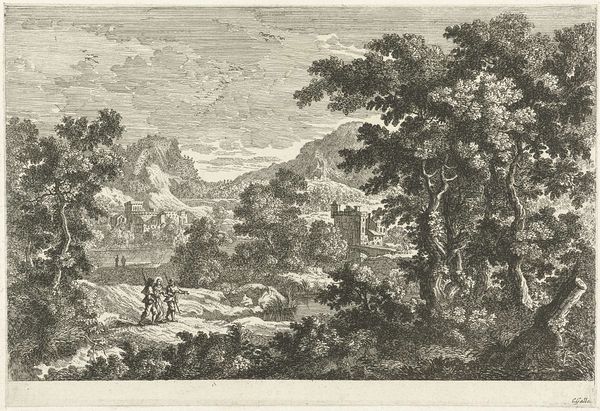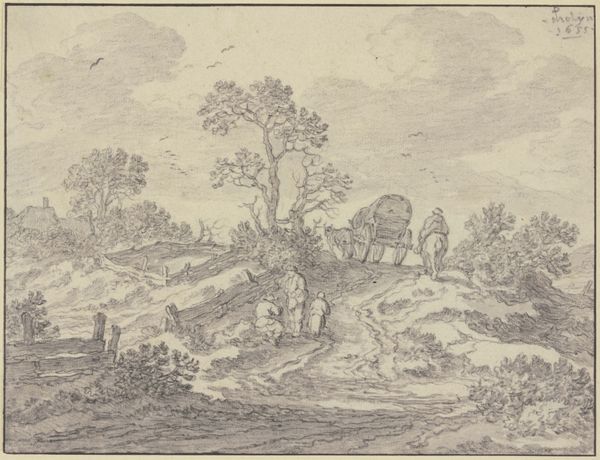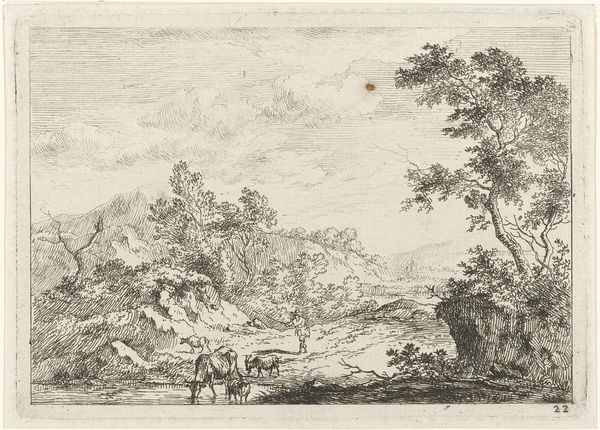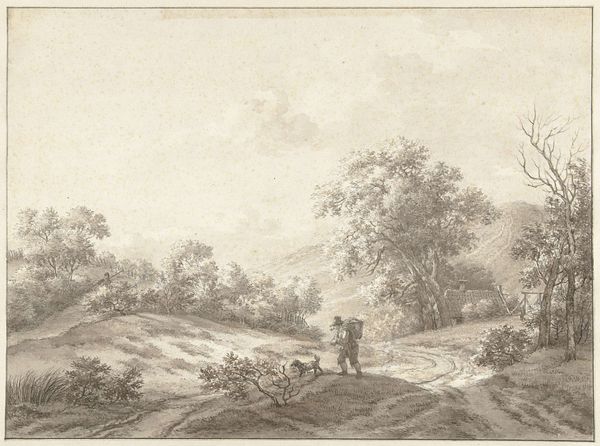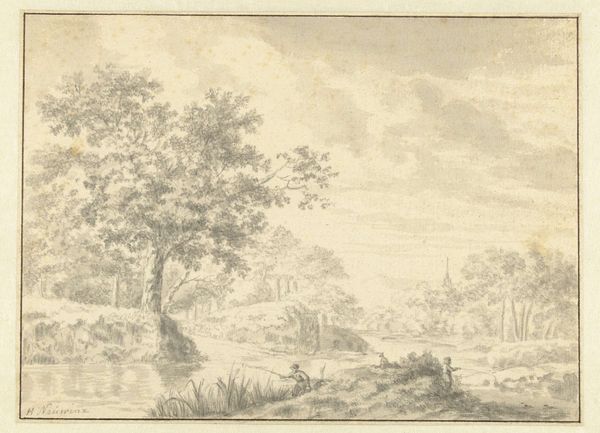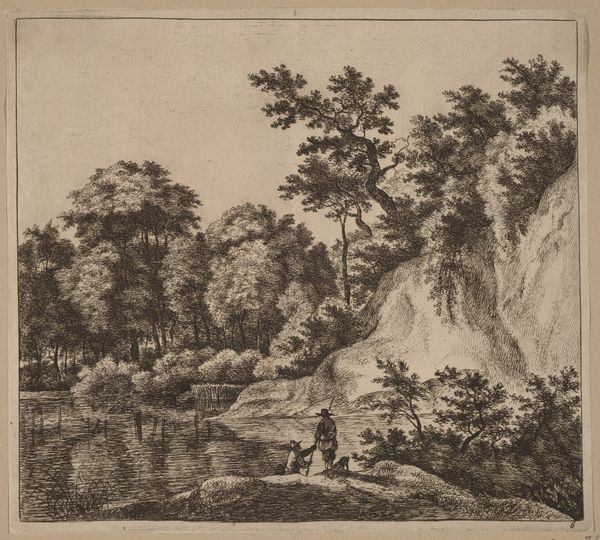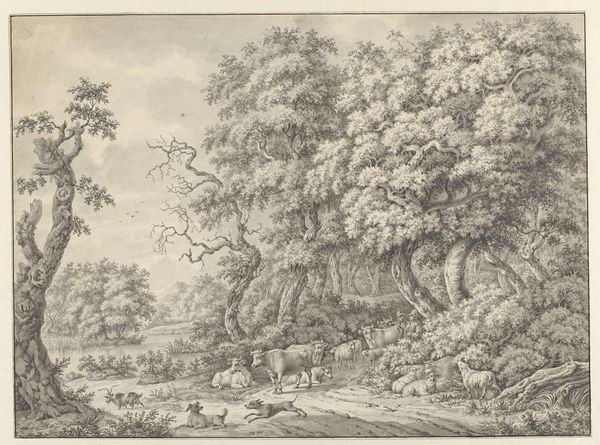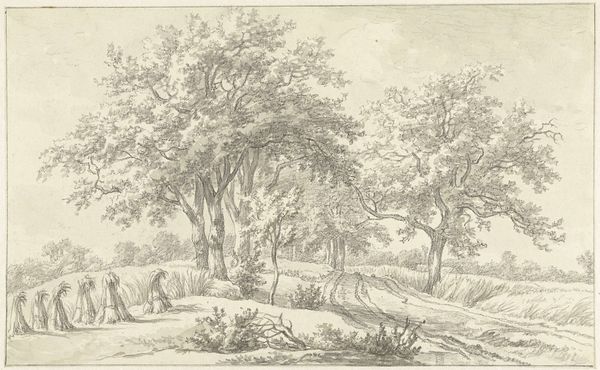
Landschap met een schuitje waarin een schapenherder met zijn kudde Possibly 1752 - 1819
0:00
0:00
jurriaanandriessen
Rijksmuseum
Dimensions: height 373 mm, width 445 mm
Copyright: Rijks Museum: Open Domain
Curator: This is "Landschap met een schuitje waarin een schapenherder met zijn kudde," a landscape drawing housed right here at the Rijksmuseum. Its creation is attributed to Jurriaan Andriessen, likely sometime between 1752 and 1819. Editor: Immediately, I'm struck by the gentleness of the scene. It feels like a memory, rendered in soft pencil and ink, perhaps viewed from a half-forgotten dream. The details fade and blur in places creating a sense of longing. Curator: Andriessen operated in a period defined by significant social shifts, marked by evolving land use, rural-to-urban migrations, and an increasingly sentimentalized view of the agrarian lifestyle. This drawing offers a window into that constructed idyll, doesn't it? Editor: Absolutely. The shepherd, the boat, even the subtle hints of a distant city – it’s a pastiche of rural existence. Is it simply an innocent scene of nature or an exercise in soft pastoral imagery constructed to evoke notions of simpler, pre-industrial existence, something far removed from the grim reality of the urban underclass? Curator: Precisely. There is a political element, in that this imagery can also create and reinforce particular social hierarchies. Editor: The rendering is very skillful, particularly the foliage. The sketch-like nature does leave room to interpret some social context. One wonders, how were these types of works consumed? Were they, themselves, indicators of status? Who has the leisure to contemplate romantic images of countryside life? Curator: The politics of imagery at play, again! I suppose the act of idealizing such a scene removes any sense of struggle for existence; such things are easily erased from view. That allows for such themes to be comfortably appreciated by those not directly engaging in physical toil. It's likely these scenes affirmed societal arrangements rather than challenging them. Editor: It certainly gives you a sense of place, doesn’t it? Looking at the landscape today – at changing urban and rural planning – it gives one the chance to explore contemporary intersections of land use, art and class structures. Curator: Thank you; it seems even small sketches have immense stories embedded within them! Editor: Exactly. I'm definitely walking away with a fresh perspective on how landscapes, even in seemingly simple sketches, actively shape the way we see and experience our world.
Comments
No comments
Be the first to comment and join the conversation on the ultimate creative platform.
